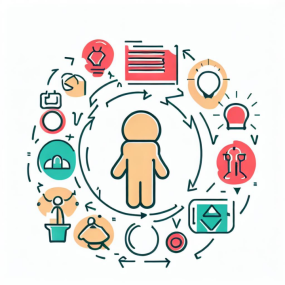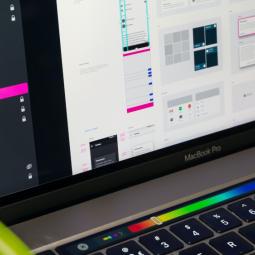Human-centered design (HCD) is a framework that focuses on building products and services around the needs and experiences of people. This method ensures that solutions are not only technically sound but also deeply resonate with users, leading to higher engagement and satisfaction.
Understanding Human-Centered Design
What is Human-Centered Design?
HCD prioritizes understanding the users, their environment, and their core needs as the fundamental step in the design process. It integrates the human perspective in all stages of problem-solving, from ideation through development and implementation.
This approach is iterative, consisting of three main phases: Inspiration, Ideation, and Implementation.
Benefits of HCD
- Enhanced User Experience: By focusing on users, HCD leads to products and services that are more user-friendly, accessible, and effective.
- Increased Innovation: It fosters creativity by involving diverse perspectives and exploring multiple solutions to meet user needs.
- Improved Efficiency: Products designed with user input are more likely to be used and valued, reducing the need for costly redesigns and adjustments.
Implementing Human-Centered Design
Phase 1: Inspiration
Goal: Gather insights about the users and their needs.
Activities:
- Conduct immersive observations and ethnographic studies to understand user behaviours and contexts.
- Engage directly with users through interviews and focus groups to hear their stories and experiences.
Phase 2: Ideation
Goal: Generate ideas that effectively respond to the insights gathered.
Activities:
- Organise brainstorming sessions and workshops to foster creative idea generation.
- Develop prototypes and continue to iterate based on user feedback, ensuring the solution aligns with their needs.
Phase 3: Implementation
Goal: Develop and deploy the solution that has been ideated and refined.
Activities:
- Pilot the solution in a real-world environment to test its effectiveness and make necessary adjustments.
- Evaluate the impact of the solution and continue to refine it based on user feedback and performance metrics.
Tools and Resources
- Empathy Tools: Leverage tools like empathy maps and user personas to capture and analyse user behaviour and preferences.
- Prototyping Tools: Utilize digital tools for creating wireframes and prototypes that can be easily modified based on user testing results.
- Project Management Tools: Employ tools that facilitate collaboration among diverse teams and streamline the collection and sharing of insights.
Best Practices in Human-Centered Design
- Leverage Team Diversity: Encourage collaboration across different areas of expertise within your team and amongst your participants. This helps to integrate various insights and ideas, ensuring the solution is well-rounded and effectively addresses user needs.
- Iterative Process: Be prepared to revisit and refine ideas as new insights are gained through continuous user engagement.
- Focus on Accessibility: Ensure that the solutions developed are accessible to all users, including those with disabilities.





Status message
Thanks for rating this guide.